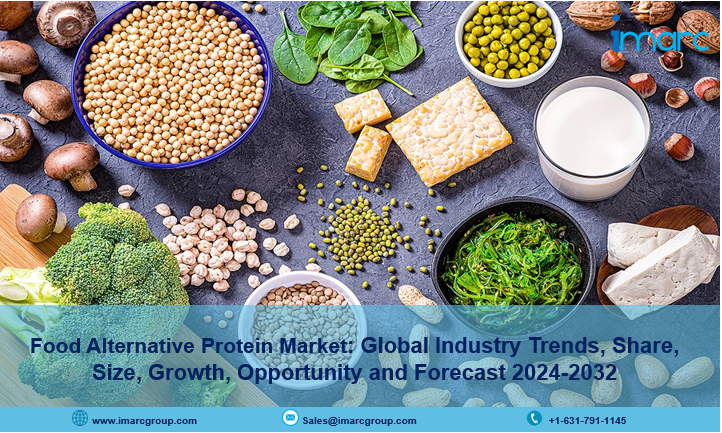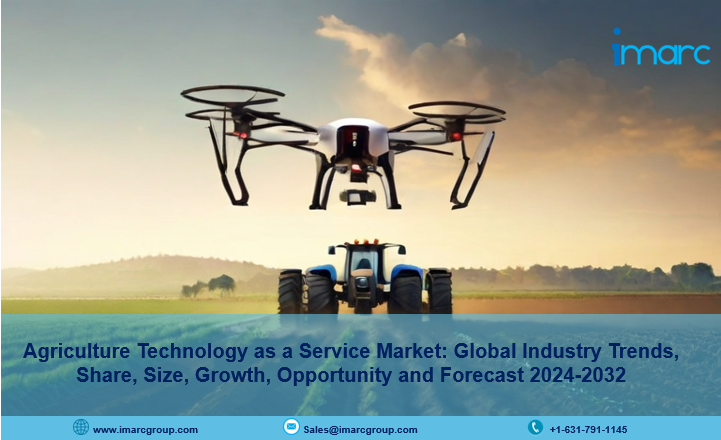The latest report by IMARC Group, titled “Food Alternative Protein Market Report by Source (Plant-based, Insect-based, Microbial-based), Application (Meat Analogs, Bakery, Dairy Alternatives, Cereals and Snacks, Beverages, and Others), and Region 2024-2032“, The global food alternative protein market size reached US$ 19.8 Billion in 2023. Looking forward, IMARC Group expects the market to reach US$ 52.3 Billion by 2032, exhibiting a growth rate (CAGR) of 11.1% during 2024-2032.
Factors Affecting the Growth of Food Alternative Protein Industry:
- Environmental Sustainability:
One of the primary drivers fueling the growth of the food alternative protein market is the increasing awareness about environmental sustainability. Traditional animal agriculture is associated with significant environmental impacts, including greenhouse gas emissions, land use, water consumption, and deforestation. As the global population continues to grow and demand for protein-rich diets rises, the environmental strain caused by conventional livestock farming becomes more pronounced. Alternative protein sources, such as plant-based proteins and cultured meat, offer a promising solution to mitigate these environmental challenges. Plant-based proteins require significantly fewer natural resources, emit fewer greenhouse gases, and have a lower ecological footprint compared to animal-based proteins. Moreover, technologies, such as cellular agriculture enable the production of meat without the need for large-scale animal farming, reducing land use and water consumption while minimizing environmental degradation.
- Changing Health and Wellness Trends:
Another significant factor driving the food alternative protein market is the increasing focus on health and wellness among consumers. There is a growing body of evidence linking excessive consumption of animal-based products to various health issues, including heart disease, obesity, and certain cancers. As a result, many consumers are seeking healthier dietary options that are lower in saturated fats, cholesterol, and other harmful compounds commonly found in animal-derived proteins. Plant-based proteins offer a compelling alternative for health-conscious consumers, as they are generally lower in fat and cholesterol while being rich in essential nutrients such as fiber, vitamins, and minerals. Additionally, plant-based diets have been associated with numerous health benefits, including reduced risk of chronic diseases and improved overall well-being.
- Ethical and Animal Welfare Concerns:
Ethical considerations and concerns for animal welfare are also significant drivers behind the rise of the food alternative protein market. Increasingly, consumers are questioning the morality and ethics of conventional animal farming practices, such as confined animal feeding operations (CAFOs) and factory farming, which are often associated with animal cruelty, stress, and suffering. The shift toward alternative protein sources reflects a broader societal trend toward more compassionate and ethical consumption choices. Plant-based proteins and cultured meat offer a cruelty-free alternative to traditional animal products, as they do not involve the slaughter or exploitation of animals. This resonates with consumers who prioritize ethical treatment of animals and seek products that align with their values.
Competitive Landscape with Key Player:
- AMCO Proteins
- Archer-Daniels-Midland Company
- Cargill, Incorporated
- Ingredion Incorporated
- Koninklijke DSM N.V.
- Lallemand Inc.
- Puris
- The Scoular Company
For an in-depth analysis, you can refer sample copy of the report: https://www.imarcgroup.com/food-alternative-protein-market/requestsample
Report Segmentation:
The report has segmented the market into the following categories:
Breakup by Source:
- Plant-based
- Insect-based
- Microbial-based
- Bacteria
- Yeast
- Algae
- Others
Plant-based dominates the market due to its alignment with environmental sustainability, health and wellness trends, and ethical considerations, appealing to a wide range of consumers seeking more sustainable, healthier, and ethically produced food options.
Breakup by Application:
- Meat Analogs
- Bakery
- Dairy Alternatives
- Cereals and Snacks
- Beverages
- Others
Meat analogs holds maximum number of shares due to their ability to closely replicate the taste, texture, and nutritional profile of traditional meat products, appealing to consumers seeking plant-based alternatives without compromising on sensory experience.
Market Breakup by Region:
- North America (United States, Canada)
- Asia Pacific (China, Japan, India, South Korea, Australia, Indonesia, Others)
- Europe (Germany, France, United Kingdom, Italy, Spain, Russia, Others)
- Latin America (Brazil, Mexico, Others)
- Middle East and Africa
North America’s dominance in the food alternative protein market is attributed to high consumer demand for innovative food products, strong investment in food technology research and development, and a well-established infrastructure supporting the production and distribution of alternative protein products.
Global Food Alternative Protein Market Trends:
Cultural and dietary shifts play a significant role in driving the demand for food alternative proteins. As societies become more diverse and interconnected, there is a growing appreciation for different cuisines and dietary preferences. Many cultures have traditional dishes that are plant-based or utilize alternative protein sources, and as these culinary traditions gain popularity globally, there is a natural inclination toward incorporating more plant-based options into mainstream diets. Additionally, as urbanization increases and lifestyles become more fast-paced, there is a greater demand for convenient and on-the-go food options, making plant-based alternatives increasingly appealing to consumers seeking healthier and more sustainable choices. Furthermore, food security concerns, including issues related to population growth, food supply chain disruptions, and the impact of climate change on agricultural productivity, are driving interest in alternative protein sources. Traditional livestock farming is resource-intensive and vulnerable to various environmental and geopolitical factors, which can affect food availability and affordability.
Note: If you need specific information that is not currently within the scope of the report, we will provide it to you as a part of the customization.
About Us
IMARC Group is a leading market research company that offers management strategy and market research worldwide. We partner with clients in all sectors and regions to identify their highest-value opportunities, address their most critical challenges, and transform their businesses.
IMARC’s information products include major market, scientific, economic and technological developments for business leaders in pharmaceutical, industrial, and high technology organizations. Market forecasts and industry analysis for biotechnology, advanced materials, pharmaceuticals, food and beverage, travel and tourism, nanotechnology and novel processing methods are at the top of the company’s expertise.
Our offerings include comprehensive market intelligence in the form of research reports, production cost reports, feasibility studies, and consulting services. Our team, which includes experienced researchers and analysts from various industries, is dedicated to providing high-quality data and insights to our clientele, ranging from small and medium businesses to Fortune 1000 corporations.
Contact US
IMARC Group
134 N 4th St. Brooklyn, NY 11249, USA
Email: sales@imarcgroup.com
Tel No:(D) +91 120 433 0800
United States: +1-631-791-1145 | United Kingdom: +44-753-713-2163









